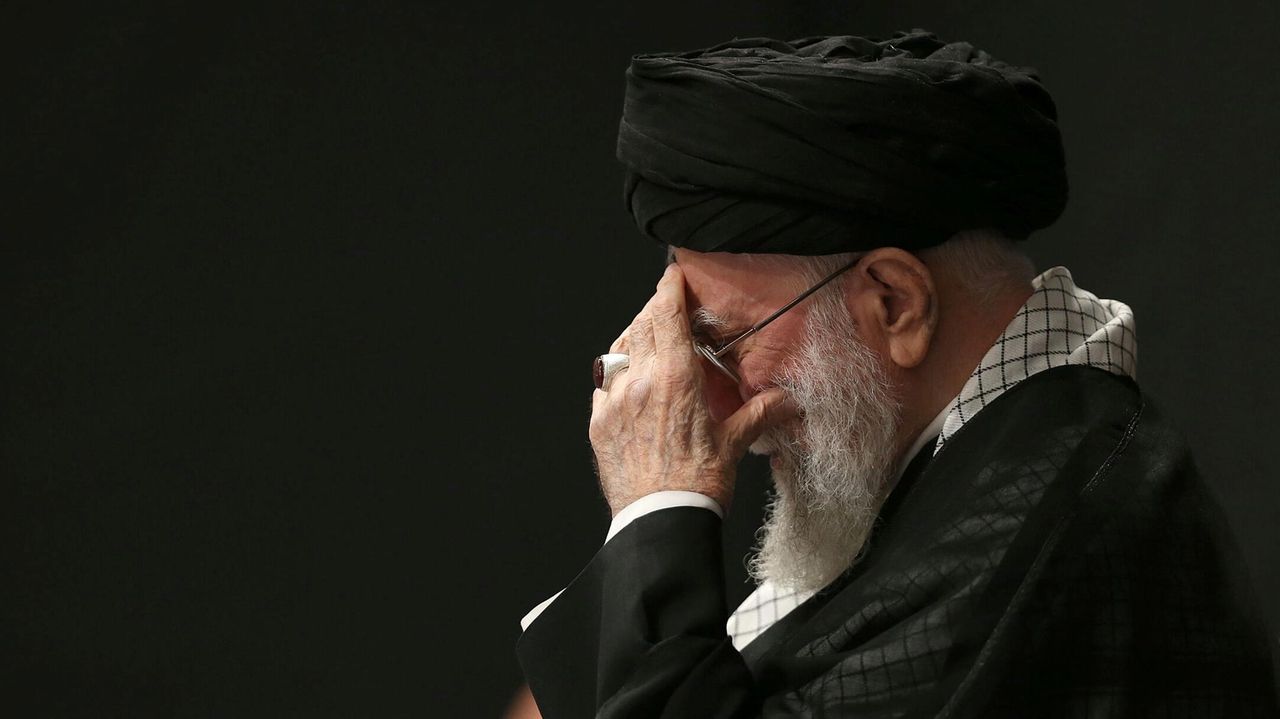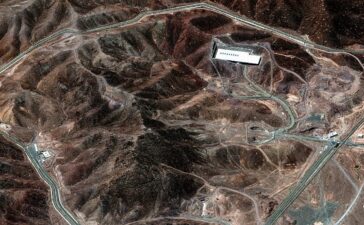Iran’s Supreme Leader Ayatollah Ali Khamenei made his first public appearance Saturday since the end of the most intense military confrontation between Iran and Israel in recent years. The appearance took place during a major Shiite religious ceremony ahead of Ashoura, amid continued concerns over Iran’s nuclear program, regional security, and U.S.–Iran relations.
First Public Appearance After Ceasefire Raises Security, Leadership Questions
The 86-year-old leader was seen entering a heavily guarded mosque near his official residence in Tehran, where he was greeted by senior Iranian officials and a large crowd of mourners marking the holy day of Ashoura. The event marked his first in-person appearance since a 12-day conflict that saw hundreds killed and strategic infrastructure damaged across both nations.
While no formal remarks were reported at the event, Khamenei’s appearance was widely interpreted as a signal of continuity and control following weeks of heightened speculation about his location and security status during the conflict. State television aired footage of Khamenei calmly waving to the crowd and taking his seat as attendees chanted slogans in unison.
The ceremony was held under stringent security, with senior members of the Iranian government—including Parliament Speaker Mohammad Bagher Ghalibaf—in attendance. The reemergence of the supreme leader came days after a pre-recorded speech on June 26, in which he claimed Iran had delivered a “slap to America’s face” by striking a U.S. airbase in Qatar, following reports of Israeli and American strikes on Iranian nuclear facilities.
Iran–Israel War Leaves Nuclear Facilities Damaged, IAEA Access Suspended
The conflict began in mid-June when Israel launched targeted strikes against Iranian nuclear and military assets, citing concerns that Tehran was nearing weapons-grade uranium enrichment. Iran retaliated with more than 550 ballistic missiles targeting Israeli cities and defense infrastructure. The Israeli military reported that most were intercepted, though 28 civilians and soldiers were killed.
Iran acknowledged over 900 deaths on its side and significant damage to multiple nuclear sites, though the full extent of that damage remains undisclosed. In the aftermath, Iran suspended cooperation with the International Atomic Energy Agency (IAEA), blocking further inspections and heightening fears of reduced international oversight.
Iranian officials claimed that uranium enrichment activities were safeguarded, but experts remain concerned about the potential movement of nuclear materials and the status of advanced centrifuge operations.
U.S. Involvement, Trump Response, and Strategic Uncertainty
The United States, reportedly acting in support of Israel and regional allies, targeted three Iranian nuclear sites during the conflict. In a controversial move, former President Donald Trump posted on social media during the war that the U.S. “knew where Khamenei was” but had “no plans to target him—at least for now.” The remarks sparked international debate on the use of digital platforms for geopolitical signaling.
While Washington has yet to confirm operational details of its involvement, the strikes—combined with Iran’s retaliatory escalation—brought the region dangerously close to full-scale war. Analysts warn that the diplomatic window to return to nuclear negotiations is rapidly narrowing.
Ashoura Ceremony: A Symbol of Resistance Amid Political Uncertainty
Khamenei’s reappearance was timed with the approach of Ashoura, the 10th day of the Islamic month of Muharram, commemorating the martyrdom of Imam Hussein, the grandson of the Prophet Muhammad. The event is a foundational moment in Shiite identity, symbolizing defiance against oppression and injustice.
Across Tehran, thousands of Shiite mourners dressed in black gathered for processions, chanting elegies and engaging in self-flagellation as red flags—representing Hussein’s blood—were raised. Volunteers sprayed water over the crowd to manage the intense summer heat, while religious leaders emphasized the themes of sacrifice and resilience.
The ceremony’s political subtext was unmistakable. Hussein’s death in the 7th-century Battle of Karbala continues to inform Iran’s revolutionary narrative, positioning itself as a defender of the oppressed and challenger to perceived tyranny—an identity often reflected in the country’s foreign policy and internal rhetoric.
Outlook: Uncertain Diplomacy, Nuclear Oversight Gaps, and Regional Risk
Despite the ceasefire, the region remains on edge. Nuclear oversight has been severely restricted, and Iran’s temporary suspension of IAEA cooperation raises serious concerns about future transparency. It is still unclear whether Iran will return to nuclear negotiations with the United States and the European Union, or whether strategic deterrence will dominate its future posture.
Israel has warned it may launch pre-emptive strikes if it believes Iran is rebuilding its nuclear capacity. Iran, for its part, has vowed to maintain its sovereign right to self-defense and technological advancement, including nuclear energy development under the Non-Proliferation Treaty (NPT) framework.
Geopolitical analysts caution that without renewed diplomatic engagement, the region could face a new cycle of retaliation, miscalculation, and proxy escalation.
KEY TAKEAWAYS:
- Khamenei Reappears in Public: His first in-person appearance since the conflict signals regime stability amid rising internal and external pressure.
- Nuclear Facilities Damaged: Iran confirmed severe structural damage and halted IAEA access, raising concerns about nuclear oversight.
- 550+ Missiles Launched: Iran’s retaliatory strike was one of the largest missile offensives in recent Middle East history.
- IAEA Suspended: Tehran’s decision to block inspectors undermines global nuclear monitoring efforts.
- Ashoura Observed: Khamenei leveraged the religious ceremony to project continuity and symbolic resilience amid geopolitical strain.
Discover more from Iran News
Subscribe to get the latest posts sent to your email.

